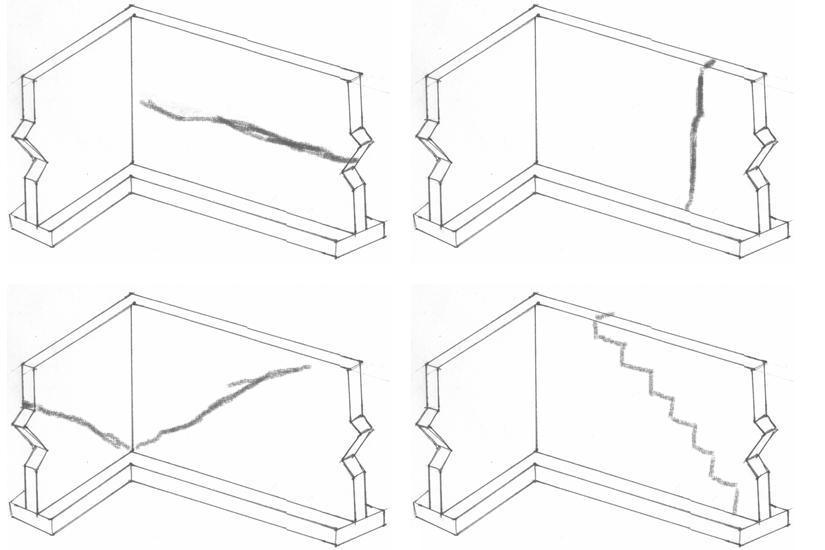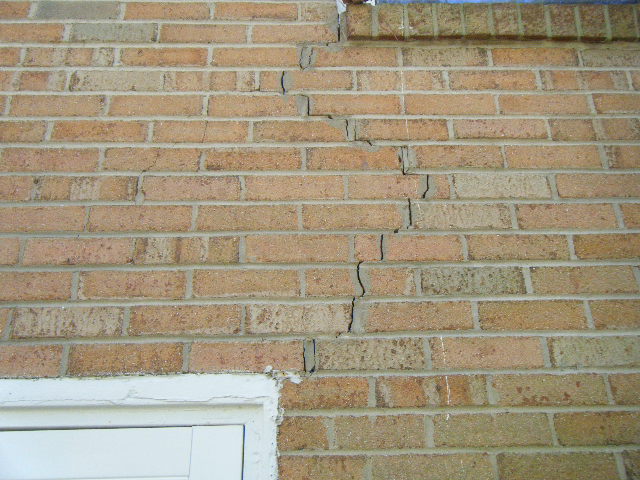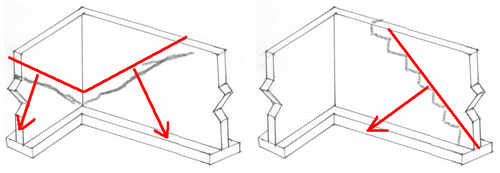Most of us have seen cracks in our homes. Some of us may have even seen cracks appearing on the foundation of the home. But do you know how to tell if a crack is structurally deficient?
There are many variations of cracks, but there are three primary cracks that are commonly found–vertical cracks, horizontal cracks and diagonal crack. The following overview of the basic types of cracks should provide you with the information you need to help determine if the cracking you see is structurally related.

Pictured from top left: Horizontal crack, Vertical crack, Diagonal cracks, and Stair-step cracks.
Vertical Cracks
Vertical cracking is not structurally related or deficient unless there is lateral movement, displacement, bowing, or if the crack is uneven from top to bottom. If the plane of the wall is the same on both sides of the crack, then it is a contraction crack, and not a structural issue.
Below is a picture of a hairline/very thin vertical crack. It is most likely initial settlement – not something to worry about, but an example of something to keep an eye on.

Since everything expands and contracts, it is common in commercial work to provide control joints in areas where expansion and contraction is expected. However, control joints are not typically installed in residential construction. Ridged materials, such as poured-in-place concrete, tend to crack from expansion and contraction much easier than more flexible materials.
Horizontal Cracks
Horizontal cracking in block construction is usually structurally related because the bond between the block is broken. However, this does not mean that the wall will collapse. The amount of movement and the cause of movement are important issues to consider. Frost, back-filling, or a significant unbalanced load may cause cracking.



Here are some examples of horizontal cracking. In the above pictures we see horizontal cracking with stabilizers, horizontal cracking without stabilizers, and horizontal cracking going into a corner.
A frost line crack is not likely to have serious repercussions unless conditions, such as negative grading, are not corrected. Cracking due to poor back-filling practices, or heavy equipment close to the walls, is usually a one-time occurrence. Movement caused by an excessive unbalanced load presents the most serious situation. A significant unbalanced load may be destined for collapse.
Diagonal Cracks
Diagonal cracking is almost always structurally related. Diagonal cracking is defined as a crack that tears through the material, not a step crack that follows the mortar joints. If you are looking at a foundation wall with diagonal cracking, there is cause for concern. However, determining the source is fairly easy.

To determine the source or cause of a diagonal crack, draw an imaginary line perpendicular to the center of the crack and downward towards the ground. There you should find the source of the cracking.

Being able to determine the cause or source of a crack can serve as a guide to the action or solution needed. If a design solution is required, a structural engineer should be consulted.
